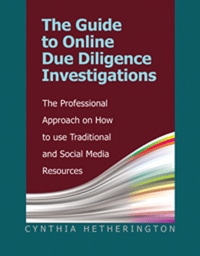 We should never accept the results of an online search at face value, whether you are reviewing the results of a Google search or an online database offering access to court records. Due diligence requires a degree of care not readily apparent in the results a web site provides. We should always consider the human error factor and the search limitations on a particular site. There are three primary areas of consideration when reviewing and evaluating the results of an online court records database:
We should never accept the results of an online search at face value, whether you are reviewing the results of a Google search or an online database offering access to court records. Due diligence requires a degree of care not readily apparent in the results a web site provides. We should always consider the human error factor and the search limitations on a particular site. There are three primary areas of consideration when reviewing and evaluating the results of an online court records database:
- The Search Mechanics. There are five search mechanics that we have to analyze;
- “Name Field” logistics. Are there wild cards? Is there a search help menu? If you get no hit by inputting first name, then last name, reverse the fields. Do not rush.
- “All Involved Parties” blocks. If a civil suit has multiple parties, either as plaintiff or defendant, you may not get any results on a full party name. Try first name(s) only. The New York statewide search on the civil index operates this way. There are others.
- “Multiple Case” types. Don’t rely on the “All” box for checking all courts. Check them one at a time if your due diligence requires it.
- The DOB Field. Run the name search with and without a DOB. You could possibly find a missing middle initial or an address previously unknown.
- Subject Notification. Does the state law applicable to the site you are searching require that the subject of your search be notified of your inquiry? If your investigation is sub-rosa this can ruin it. Such notifications are often found in driver record searches. The AOCFastCheck courts record system in Kentucky requires this.
- Analyze the Viewable Data. How fresh is it? Does the site tell you how often the court clerk updates the database? How far back does the data go; when did the county go online with its court indices? While searching is free on Indiana’s open access system, mycase.in.gov, it’s difficult to determine when each county court went online with their indices. However, the Indiana courts subscription service, www.doxpop.com, displays that information on its own page. Also, Doxpop gives us DOBs on defendants. The Odyssey database (the MyCase version) does not.
- Analyze the Disclaimer. Please read. It may not be just the standard boilerplate language, “Mistakes aren’t our fault…” The online court databases are not official court records. We all know that. But what else is that disclaimer telling us? For example, federal rules governing strict due diligence in background checks for employment purposes may require a visit to the court house.
A valuable resource for public record research is BRB Publications, which publishes “The Sourcebook to Public Record Information.” You can find links to all available court databases, federal and state, through an online subscription (at a reasonable annual fee). In addition to offering numerous research publications, BRB publishes a newsletter with regular updates on developments in not only access to the courts, but on changes in state laws that impact, usually adversely, our access to public record information. In the interest of full disclosure I extend thanks to publisher Mike Sankey and BRB’s Winter 2015 newsletter, “The Public Record Update,” for the reminders on the mechanics of court records research.
 Another valuable book you can get at a good price from BRB is Cynthia Hetherington’s “The Guide to Online Due Diligence Investigations,” published by BRB. Cynthia is a well-known and sought-after trainer in law enforcement and private investigation circles on how to use traditional and social media resources for investigations. Her web site is at www.hetheringtongroup.com.
Another valuable book you can get at a good price from BRB is Cynthia Hetherington’s “The Guide to Online Due Diligence Investigations,” published by BRB. Cynthia is a well-known and sought-after trainer in law enforcement and private investigation circles on how to use traditional and social media resources for investigations. Her web site is at www.hetheringtongroup.com.
When you need accurate facts call Trace Investigations at 800-310-8857.

